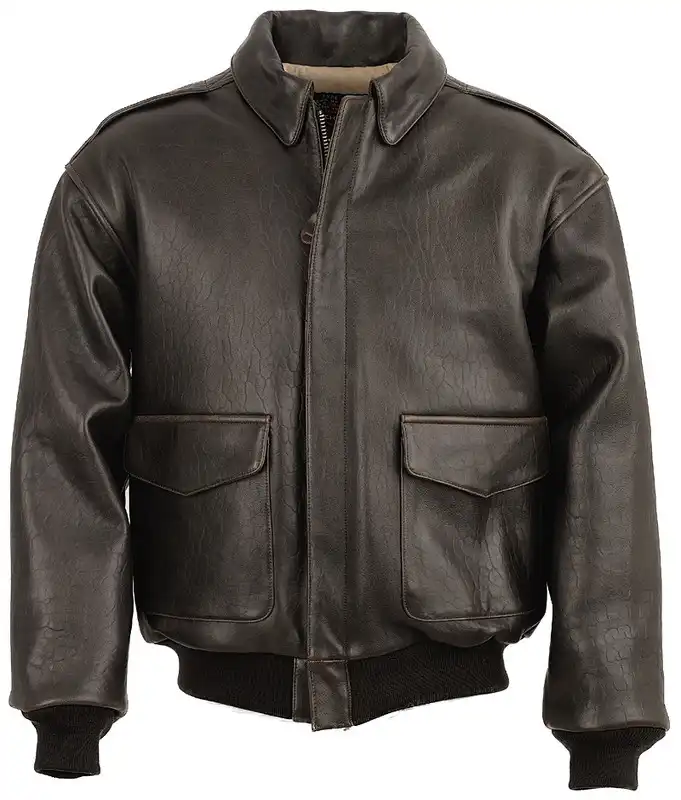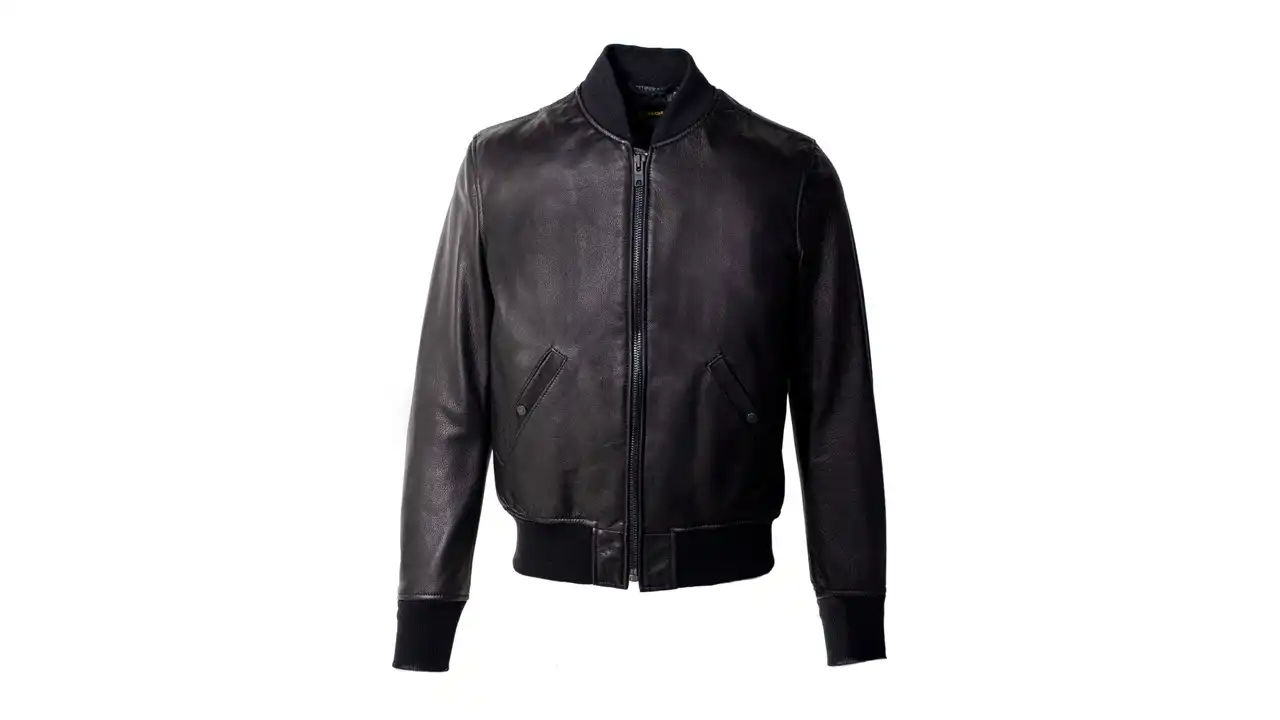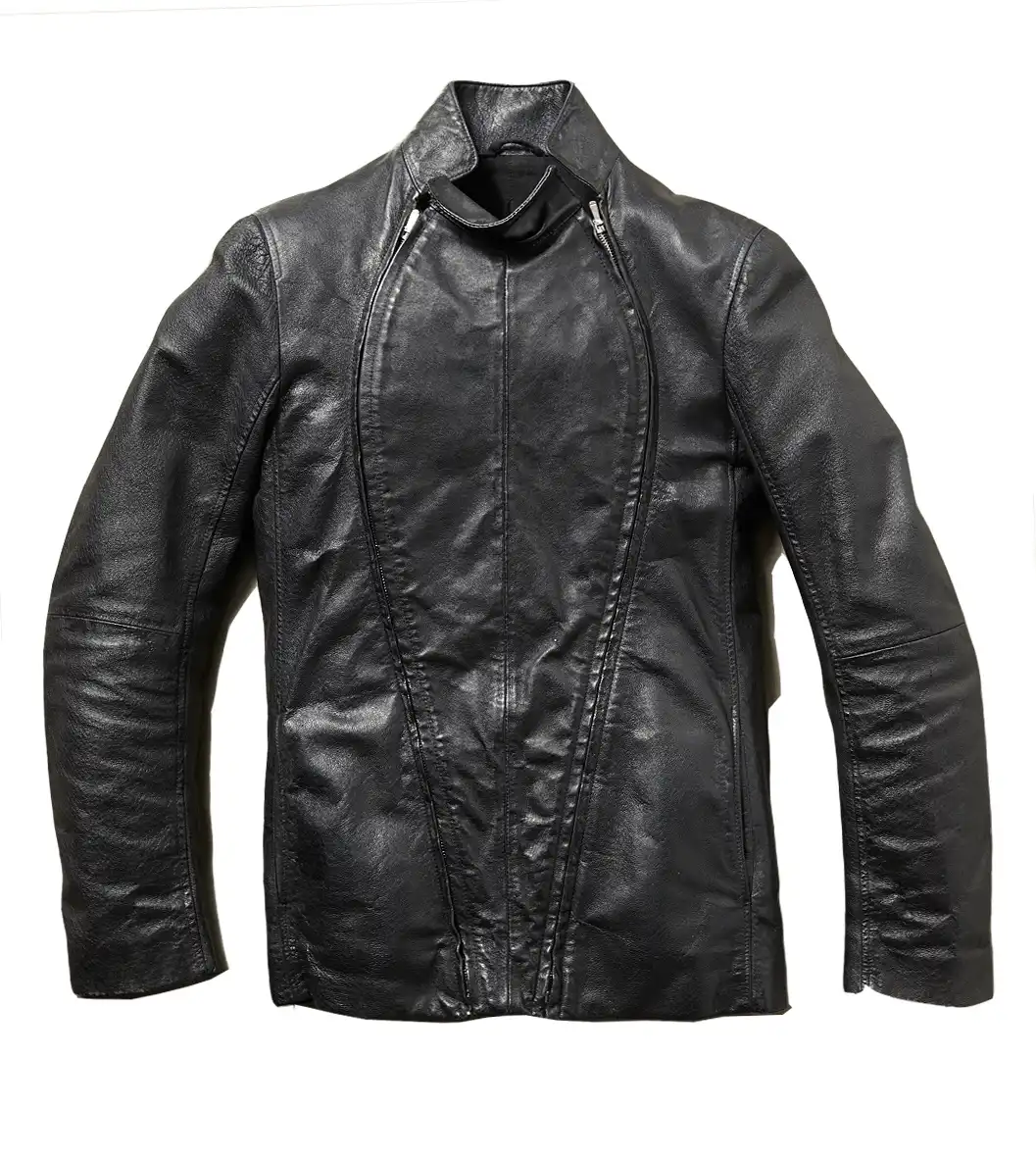Ask any “in the know” menswear guy, and he’ll tell you that the fall season is perfect “leather weather”. But, really, is there EVER a bad time to wear a great leather jacket?
I first fell in love with leather jackets working with Robert Geller, where he walked me through a new leather jacket straight from the factory in Japan on my very first day.
Since then, I created my own leather jacket line and amassed more leather jackets than any one guy should honestly have at one time.
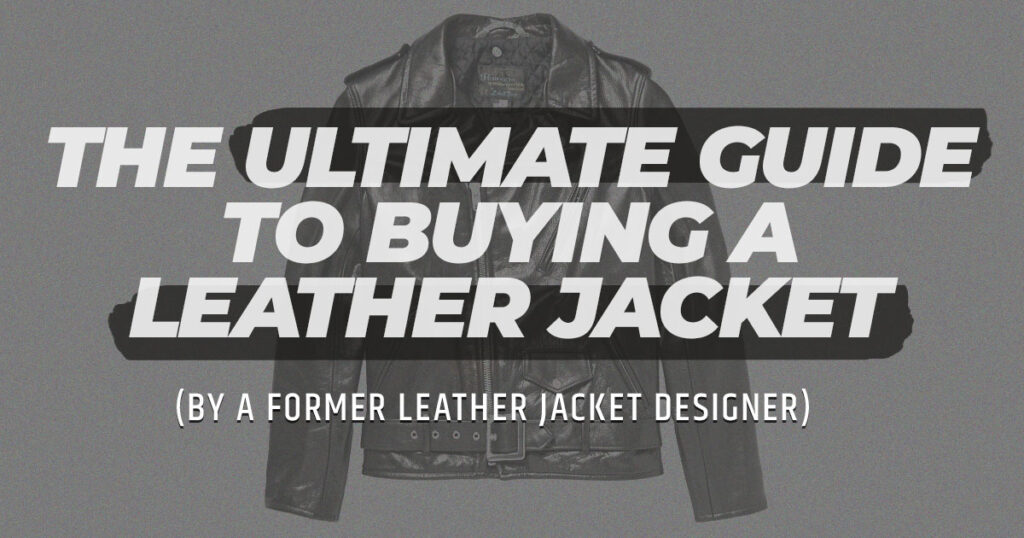
A proper, staple leather jacket will not only last you forever, it’s timeless and extremely versatile, a no brainer when it comes to building your lean wardrobe.
Outside of the suit, a leather jacket will be one of the biggest investments a guy will make in his wardrobe. Just like a suit, there’s something transformative about putting on a properly fitted leather jacket.
There’s no other way to describe it: You feel like a badass.
Barron has invited me to help you become a leather expert so you can pick the perfect leather jacket for you.
I PUT TOGETHER A SPECIAL PAGE FOR EFFORTLESS GENT READERS
There you’ll find a FREE package that includes a full color, 26-page e-book version of this post and a printable leather jacket quality checklist to help you pick up the perfect jacket.
Types Of Leather Jackets: 5 Common Styles
While you can technically make any jacket style into a leather jacket simply by making it in leather, there are roughly five types of jackets you’ll most likely run into and want to consider when it comes to picking up your staple jacket.
The Schott Perfecto (AKA “Double Rider Jacket”, Biker Jacket, Or Moto Jacket)
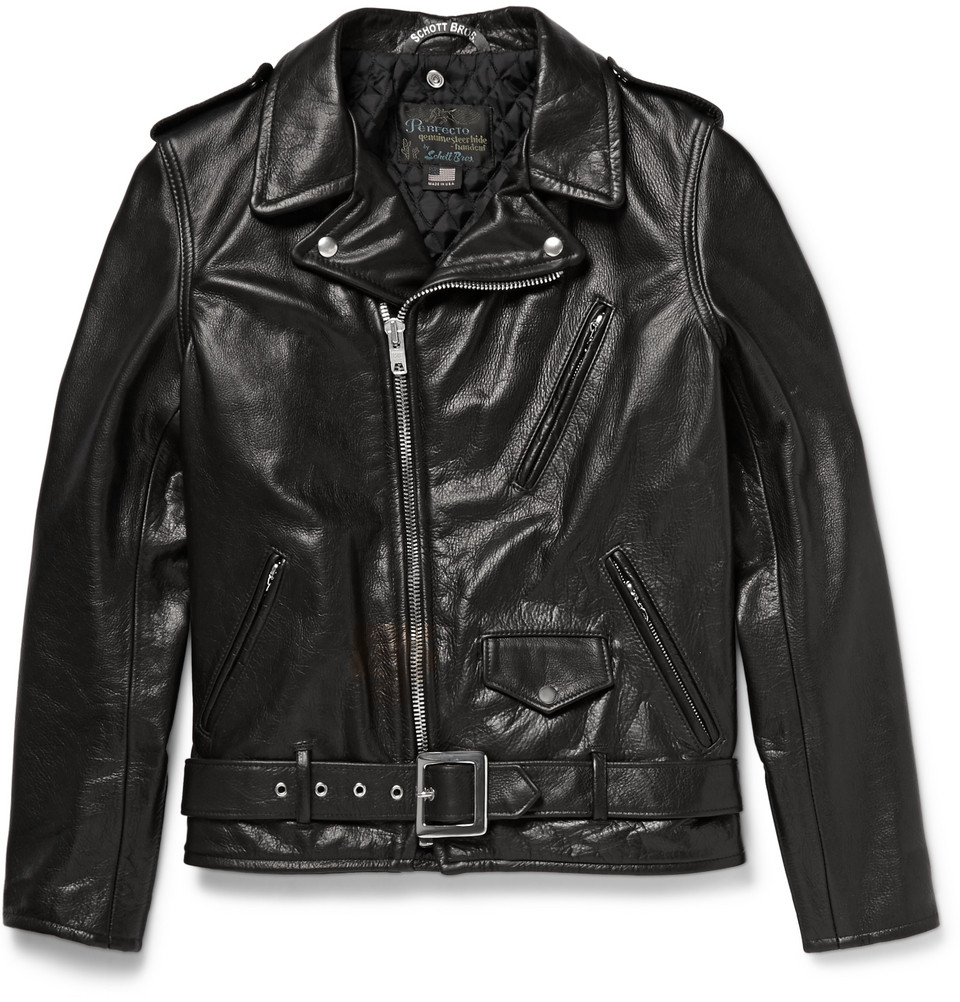
"Each individual rider-inspired jacket starts with US-sourced, drum dyed, hand cut, heavyweight 3 to 3.5-oz steerhide leather for long-lasting durability."
Ever since Marlon Brando donned a Schott Perfecto in “The Wild One”, the Perfecto became what most picture when they hear ‘leather jacket.’
It’s hard to top this classic.
The Perfecto is the classic biker jacket style, also referred to as a moto jacket. Schott’s version is still made with high quality full grain leather in the USA, and with most models clocking in at under $900, it’s hands down the best buy you can make.
Fun fact: “Perfecto” is actually a trademarked term, the generic term for this jacket design is called a “rider” or “double rider” jacket (the latter of which is more accurate, considering it’s double-breasted). Variations will have two zippers instead of one.
If you’re looking for a few more ways to wear a double rider, or the leather biker jacket style, check out the following video on Effortless Gent’s YouTube channel (and make sure to subscribe!)
The Racer Jacket

"Buttery-soft. light weight waxed leather is shaped into a classically structured jacket modernized with a button-tab stand collar and front zipper pockets."
A center front zipper jacket, traditionally with a band collar, with very minimal design details. Classic racer jacket pockets are zippered. The simplicity of this jacket make it an extremely easy and versatile jacket to wear
The A2 Flight Jacket
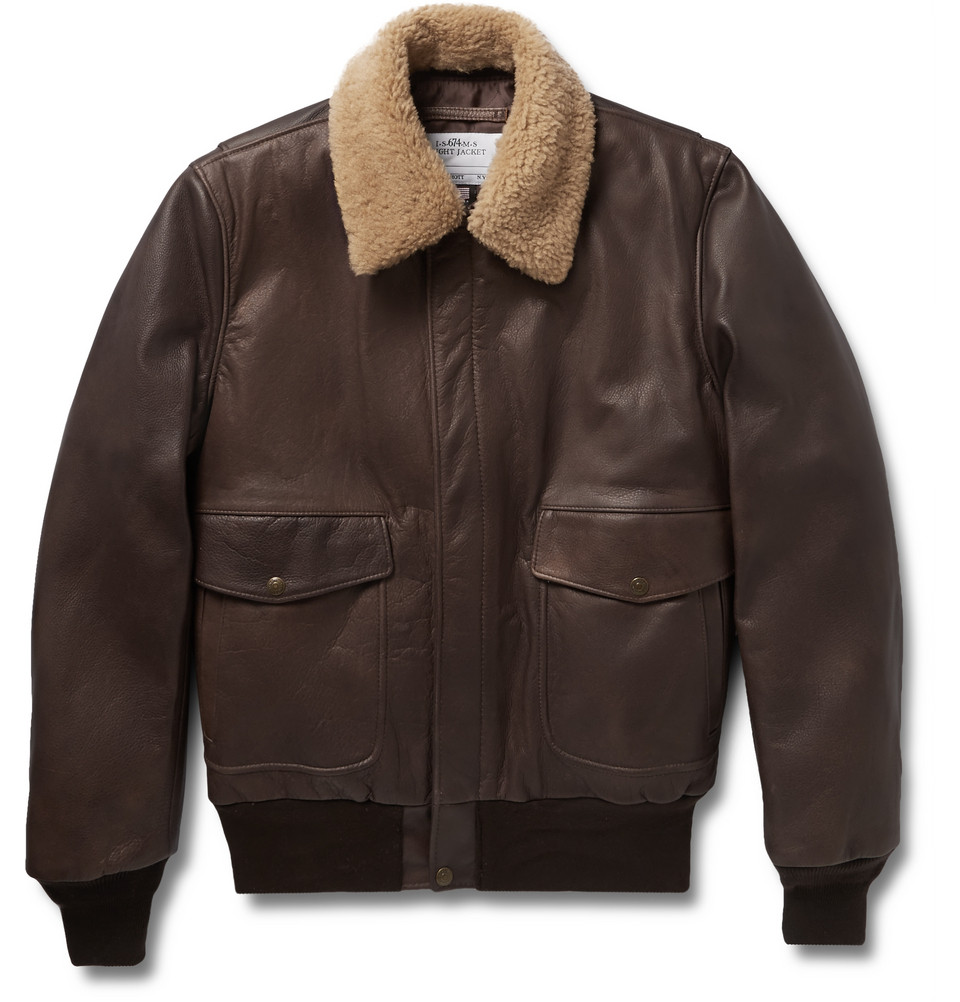
"Pebbled leather and a plaid lining give restrained ruggedness to this classic bomber done in an earthy hue." –Nordstrom
Sometimes referred to as a “flight jacket” or “bomber”, the A2 is a originally a military designed pilot’s leather jacket. The center front zipper is often covered by a placket for added protection against the wind.
Signature details include ribbed cuffs and hems, along with two large front flap pockets.
Traditionally insulated to keep pilots warm at high altitudes, A2s are usually cropped at the hips to make it easy to wear when sitting. Some will often have fur collars, which is a detail from the newer G1 model.
The MA1 Bomber Jacket

This updated take on the classic MA-1 body features a waxy pebbled cowhide leather for comfort out of the box.
Similar to the A2 bomber, the MA1 is originally a military design, and is originally made in nylon. The generic term for this jacket is also a bomber.
Some distinct features to separate it from the A2: Ribbed cuffs, ribbed collar, and slit pockets instead of the two front flap pockets, and a zipper pocket on the left sleeve.
The leather bomber is one of the most popular casual jacket styles for men, and is often adopted in leather, though more sleeker than the puffy military version of the jacket.
The Fencing Jacket

Adapted from the jackets fencers wear, zippers are placed extremely asymmetrically (and sometimes feature a strong S curve design).
This style is generally favored by higher-end avant garde labels, like Rick Owens, Carol Christian Poell and Julius.
The Dirty Little Secret Of Leather Factories
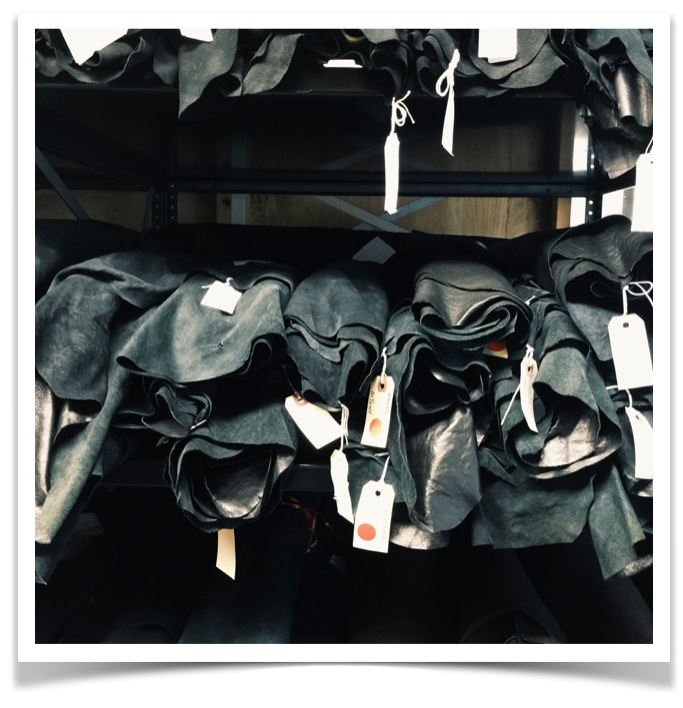
You don’t run your own leather jacket brand without learning a few surprising things.
There are fewer factories in the United States than there were 20 years ago, and even fewer of those specialize in leather. That means that a lot of jackets, from the less expensive to high end, are often made in the same factories.
A factory I worked with in NYC will sew a $2,000 retail leather jacket right next to a pile of $500 leather jackets they just finished. So, if the quality of the sewing is the same, what would make a jacket four times more expensive?
The simplest way to answer that question is to show you a rundown of how I would go about designing a $500 and a $2,000 jacket.
The Differences Between A Cheap And Expensive Leather Jacket
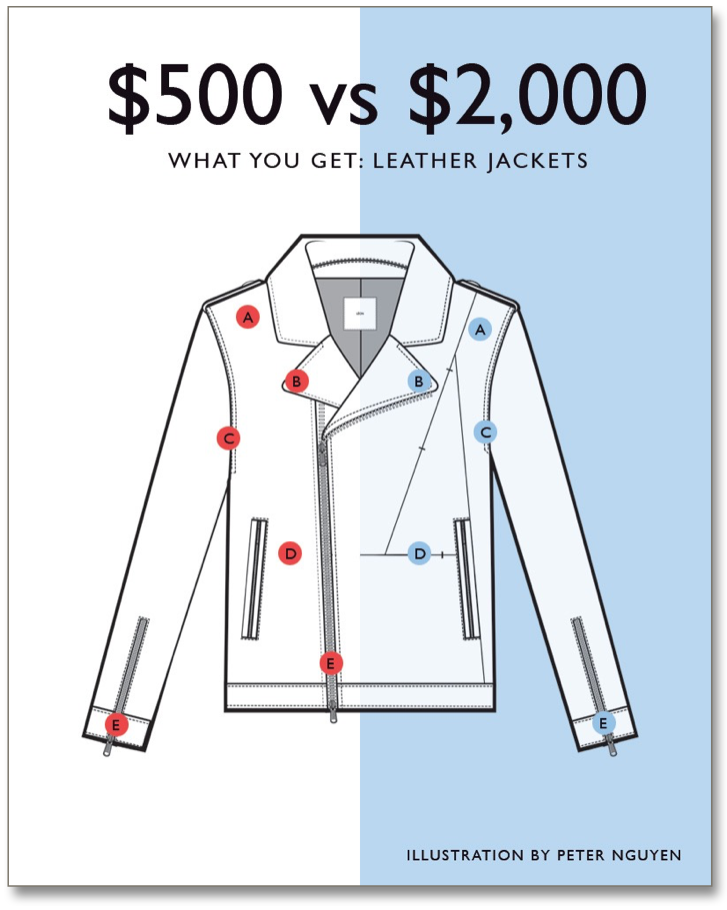
Keep in mind, these are rules of thumb and not set in stone, simply what I’ve observed as a designer and as a shopper. It will give you a realistic idea of what to expect when you go jacket hunting.
Personally, I would be VERY cautious of jackets under $500 (truthfully, even $500 is pushing it unless we’re talking used jackets – more on that later). I’ll give you some recommendations of jackets in prices later, but let’s get into the illustrated showdown:
Leather Quality
The biggest factor in the price of the jacket? The quality of the leather.
Cheaper jackets will use leather that is corrected. Animals that have a lot of scarring, branding or knicks from how they are raised. These skins will be sanded down and sometimes faux leather grains will be pressed into it, as well as extra spraying of dyes and treatments to make them more uniform.
Because of these top coatings, corrected leathers will have an overly smooth, plastic feel, versus the soft, oily, uneven textured nature of uncorrected skins.
Top Stitching

Topstitching, a decorative stitching on garments, is a highly desirable detail on leather jackets. It’s usually done along the edges of seams and pockets, and gives the jacket more visual punch. Think of it like bolding text.
High end jackets will specifically use a thick thread by German company Güttermann.
Designers will cut cost by using regular, thin thread and/or limiting the amount of top stitching on a garment, sometimes taking it out all together.
Jacket Lining
Cheaper jackets (like cheaper blazers and
These linings often shred and tear easily, feel really dry and don’t breathe well. These cheap synthetics are often the first things to fall apart over time.
Pricier jackets will often have two different linings – one for the body and one for the sleeve. Body linings will often be higher quality synthetic, warmer cottons, sometimes insulated and quilted.
Sleeves will usually be lined in a beautiful silk or silk-like fabric, such as cupro (sometimes called Bemberg), an extremely breathable material made from fibers of the cotton plant, and make the jacket feel a lot more luxurious when you put it on.
Jacket Armholes and Sleeves
Cheaper jackets (again, much like cheaper
Pricier jackets will have higher set armholes. The advantage of having a higher armhole is better arm movement, making for a better overall fit. When an armhole is too large and low, it will literally pull on the body of the jacket when you move your arms.
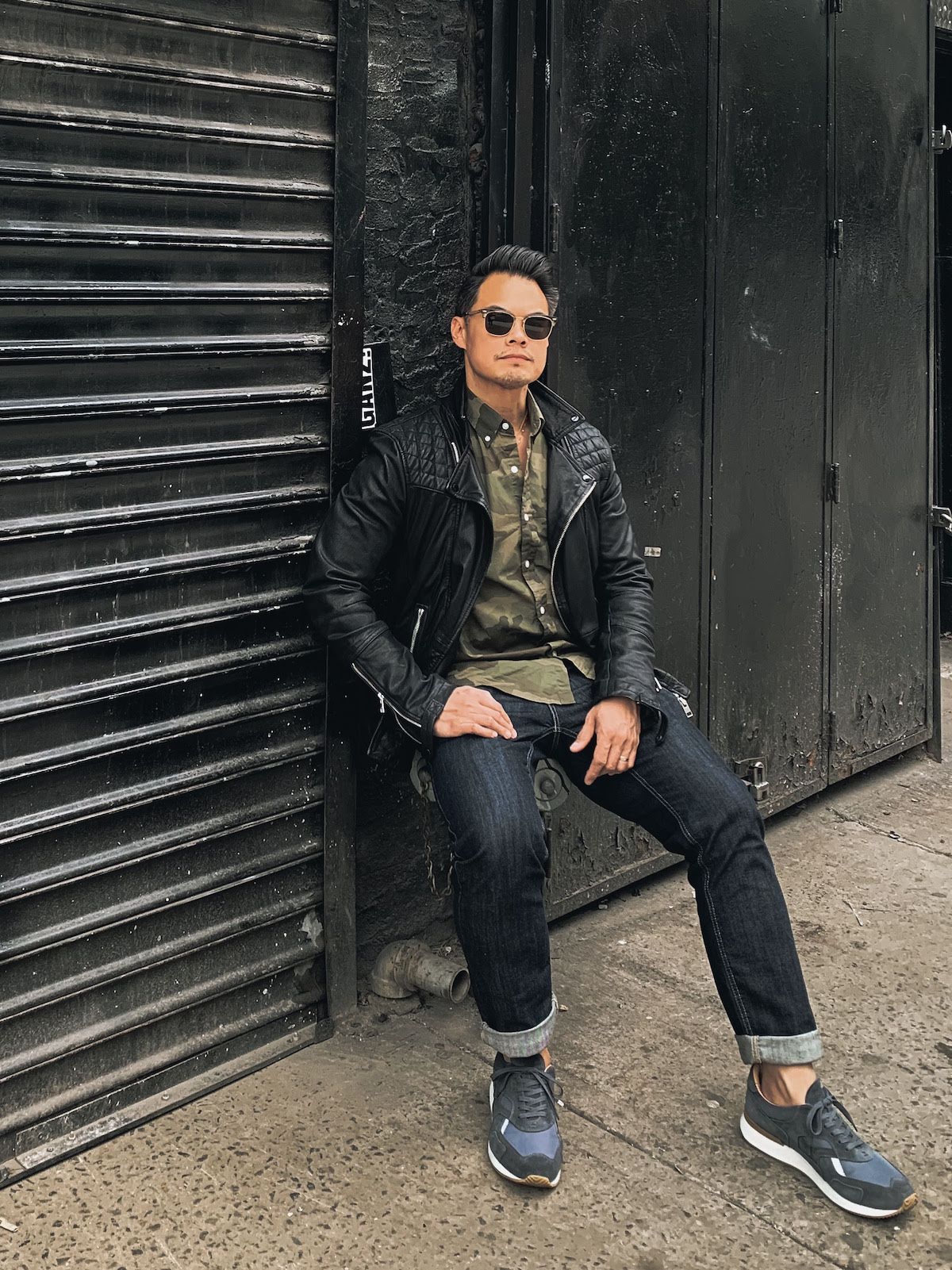
Design Elements Of The Jacket
A lower end jacket will often be simpler in design overall, because the less design elements a jacket has, the cheaper and faster it is to make.
Less design details means less pieces to cut, less pieces to line up, less to sew. This means less interesting elements, simpler pockets, and sometimes no inner pockets.
Zipper Quality
The most common zipper is the YKK, which tend to be made of lighter metal. RiRi zippers, my personal favorite, have an overall stronger build, are buttery smooth to zip up, with much shinier finishes that are more visually appealing.

Higher end jackets will often have RiRi zippers, or custom heavier weight zippers that are less likely to break instead of YKKs. The price difference between using a YKK Zipper vs a RiRi zipper is often 10x per zipper.
High end designers will also often opt for 2-way main zippers, which make jackets more comfortable to wear when you’re sitting, as you can let the jacket out from the bottom.
The Different Kinds Of Leather: The Good, The Luxurious, And The Ugly
Now that you know what goes into a $2,000 jacket compared to cheaper jackets, let’s talk about the most important part of a leather jacket: the leather.
Common Leather Types
When it comes to leather jackets, you have a good handful of animal skin choices, all with pros and cons.
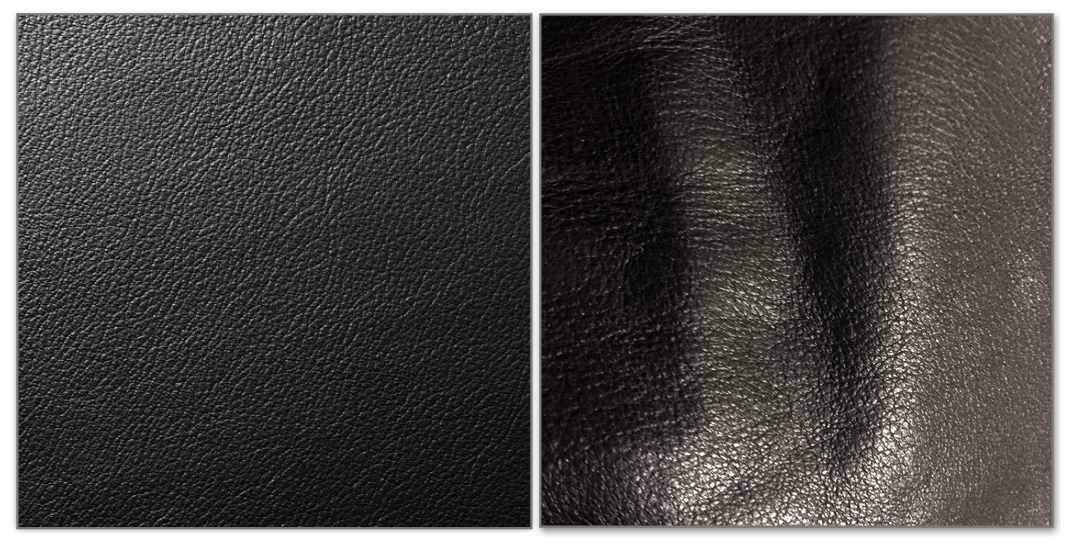
The two big ones you’ll most often run into are cow leather and lambskin. Cow used to be the king, but you’ll find that lambskin is more common now because it’s extremely soft.
The downside to lambskin though is that it’s generally more expensive because the size of the raw skins are smaller than a cow, meaning designers have to buy more to make one jacket.
My personal favorite variety is calfskin, basically a young cow. It has the properties of both cow and lamb – it’s as soft as lamb, but durable like a cow.
The downside is that calfskin is much more expensive than even lamb, because a full grown cow yields more skin (and meat) than a calf, so it’s more economically worth it for the farmer to raise the cow to maturity.
Here’s a rundown of other leather types you’ll encounter, and what to expect:
Suede: To make suede, the top portion of leather is separated from the bottom, rougher layer, known as the corium.

These are split further depending on their thickness, and then shaved and sanded smooth to give it its signature soft, fuzzy texture.
Suede is typically made from goat or lamb. Lamb suede is softer than goat, but goat is more durable.
The big downside of suede is that it absolutely cannot get wet, as it will dry and get extremely hard. Luckily, there are a handful of suede protectors you can purchase to make your jacket water repellent without changing the softness.
More Luxurious Leather Skins
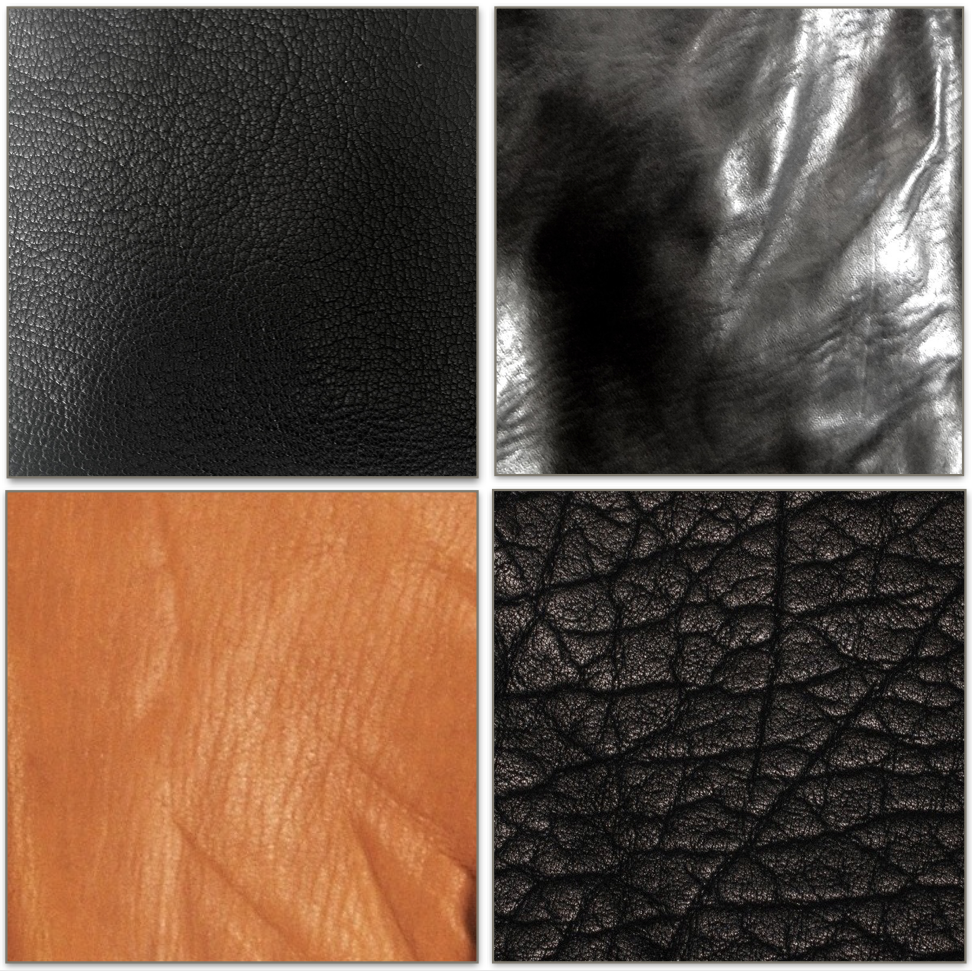
Goat: Similar to lambskin, but not as smooth or buttery soft and has a tight pebbly texture.
Horse: Slightly stiffer than cow, extremely durable, generally smoother grain and high shine, needs a good amount of breaking in.
Deerskin/Elk: Extremely durable, traditionally yellow/orange tint leather, though they’re sometimes dyed black or brown.
Pig: Similar to cow, very durable with some varying textures.
Bison: Tough, thick with a distinct large, deep grain pattern.
Exotic Leather
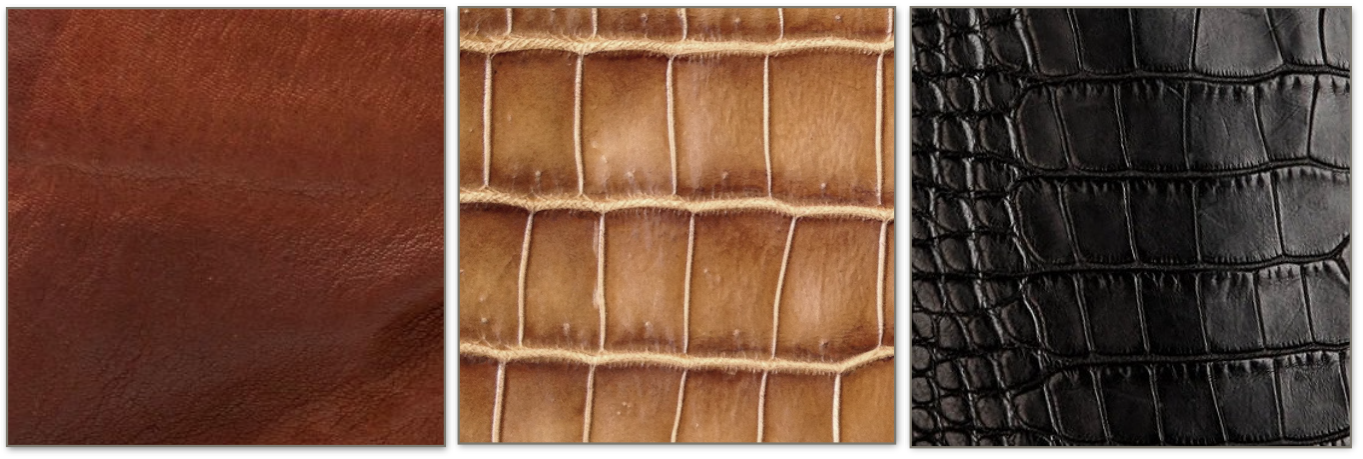
Kangaroo: Similar looking to cow leather, but thinner and much tougher. Fairly uncommon now, so brands tend to charge a premium for it.
Crocodile/Alligator: Very similar looking, with large square and rectangular shaped tile patterns. Crocodile skins will have visible hair follicles (small dots) on each tile, while alligators will not. Extremely expensive, with jackets often costing 20x+ cow or lambskin equivalents.
Useless
Faux leather: Chemical plastic that is terrible for the environment. Stay away.
What’s The Difference: Full Grain Leather, Top Grain Leather, Genuine Leather, And Corrected Leather

There is often a lot of confusion and misinformation when it comes to what makes a quality leather, specifically for leather jackets.
You’ll often see people saying you should avoid top grain leather and look for full grain leather jackets, because top grain leather is bad leather that’s corrected.
They’re partially right.
Full Grain Leather
Full Grain Leather generally refers to a leather that hasn’t been altered and retains the natural grain (skin pattern) of the animal.
These leathers are desirable because of the natural pores, which make it more breathable, along with the natural oils, which make the leather feel really soft.
The downside (to some) is that these leathers will have natural scuffs, scars and blemishes from animals just being animals. They’re also thicker, which can make for some less comfortable jackets.
Top Grain Leather
Top Grain Leather is leather that is split from the bottom layers. The bottom split layer (corium) is what they make suede out of. Splitting the top grain from the corium layer makes the leather thinner, creating more comfortable jackets.
Genuine Leather
Genuine leather typically refers to the fact that the leather did come from an animal (thus being genuine), although that doesn’t speak to the leather’s actual quality. Usually a product marked “genuine leather”, while not necessarily fake leather, is certainly a lower grade than full grain or top grain leather.
Corrected Leather
Corrected Leather is leather that is sanded down to remove the imperfections, thus removing the original grain, then given a faux animal skin grain via mechanical pressing.
Corrected leathers are coated with topical treatments, oils and dye, to make them more appealing. The result is an often uniform grain, super smooth leather that’s very “plastic” feeling.
This is where most people get confused.
Corrected leather is always made from top grain leather, but not all top grain leather is corrected.
Uncorrected, high quality top grain leathers will often be called a naked leather. Sometimes high quality top grain leathers will be coated with a finish to give it a unique property. One of my personal favorites are waxed lambskins, which make the leather less shiny and give it this smooth, waxy touch.
The most important thing to remember is that full versus top grain is almost irrelevant when you’re thinking about the actual quality of a leather jacket.
A naked top grain leather can be just as nice as a naked full grain. A full grain leather jacket can be uncomfortable compared to a top grain leather jacket because of its thickness.
How does it fit? What’s the quality of the lining, or the zippers? What kind of leather is it? All of these things should be considered when buying a jacket.
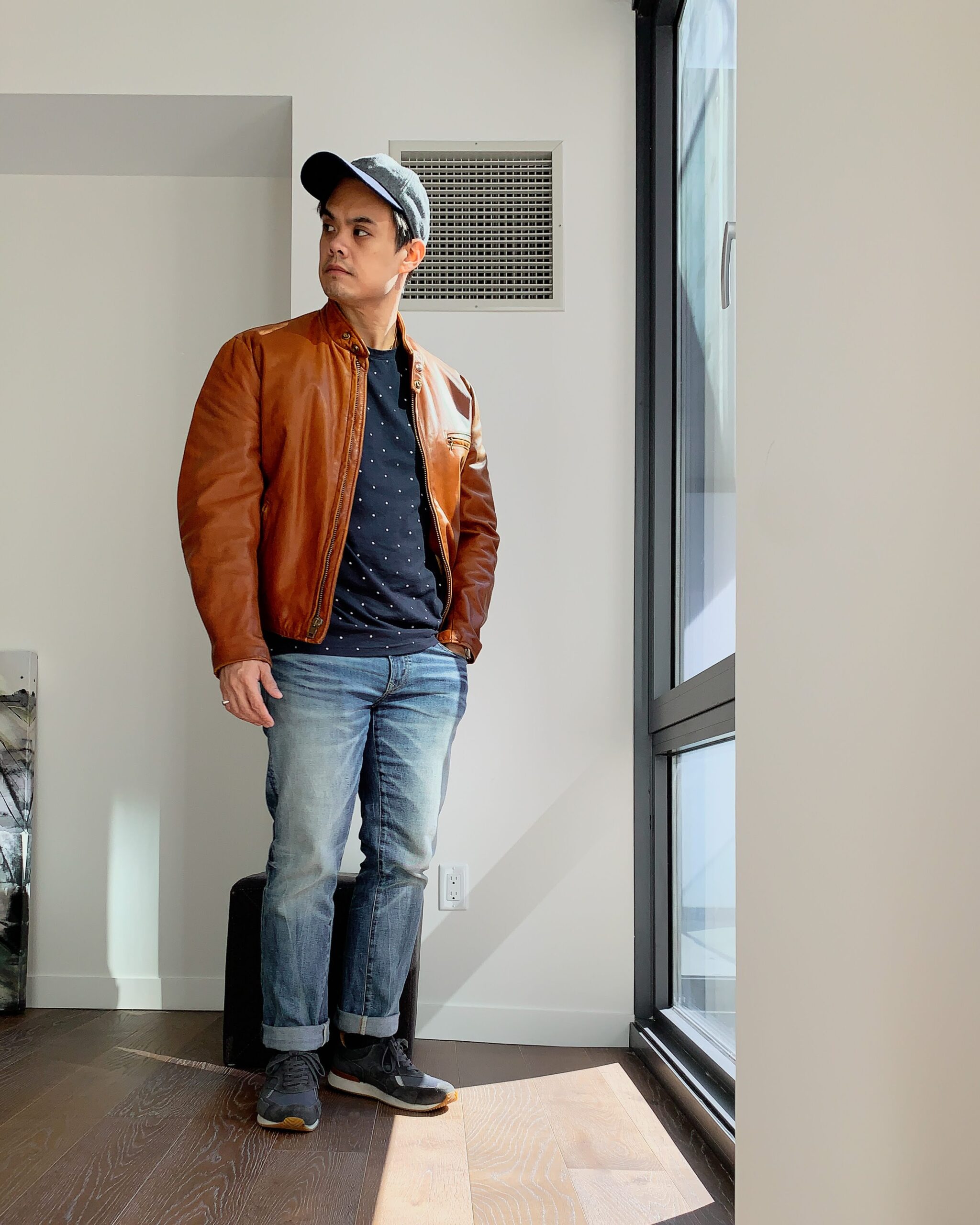
Tips For Buying A Leather Jacket
Stay away from overcorrected, plastic, fake leather
The higher up you go the price chain, the less likely you’ll run into it.
You’ll mostly be dealing with slight differences in quality of full grain and top grain leather, which are sometimes hard to tell apart. At which point it’s really just a matter of your own preference on how the leather feels.
Feel the leather by scrunching and squeezing the sleeve it in your hand. Rub your fingers on it. Is it soft, grainy, a little oily feeling? It’s probably good leather. If it feels slick, smooth or “plasticy,” you might have an over-treated and corrected leather.
Real quality is in the details
When it comes to determining the overall quality of the jacket, checking out the other parts of the jacket helps a lot. A trick of mine is to pay more attention to the details, as the quality of the leather can be very subtle once you get away from over corrected leathers.
Check the zipper, the lining, the stitching. If you see a RiRi zipper, or heavy duty, smooth zipping custom branded zipper, then you’re also most likely dealing with good leather. The zipper is usually the first thing to go when trying to make a design cheaper.
You wouldn’t put a RiRi zipper on a crappy quality leather jacket – that would be like slicing truffles on a Subway sandwich. Sometimes expensive brands will use a YKK, but there are other details you can look at.
Check the lining. Are there two separate linings for the body and sleeve? If yes, it’s most likely a nicer jacket as it’s cheaper to just you one type of lining.
Is the synthetic or silk lining smooth or is it relatively rough? Smooth is better sign of quality, bad silk and synthetic linings will be rough, dry and slightly “crunchy”.

The rules still apply: Fit Is King
You want the jacket to fit snug, but not too tight that your limbs go numb.
As the saying goes, it should fit like a glove. You wouldn’t wear a glove that was so tight you couldn’t grip anything. With your jacket, you want to be able to bend your arms comfortably.
A good leather jacket will bend and mold with you.
Make sure you’re wearing what you’d most likely wear your leather jacket with when you’re shopping for a jacket.
For me, that’s usually a dress
If you buy your jacket wearing a t-shirt, and find yourself wanting to wear a hoodie under your jacket in the future, it’s going to be a bit uncomfortable.
Whether you should be able to zip it up or not is a matter of preference. I almost never wear my jackets zipped up, so sometimes I lean towards the tighter side.
In general, jackets with higher armholes will fit better. The lower the armhole, the more it will pull on the body of the garment when you move your arms. Higher armholes will give you better movement in your arms.
Consider color
For versatility, black and brown are king. If you’re shopping for a main leather jacket, stay away from colored leathers, like bordeaux, army green and grey, for now.
Black and brown leather jackets are more acceptable if you’re looking for a jacket to wear almost every day. If your daily leather jacket is red, it’s hard for people not to think, “Didn’t you just wear that yesterday?”
Respect the price
I don’t recommend you cutting corners “just for the look”.
An entry level Schott Perfecto, in full grain leather, made in the USA, will run you $750 brand new. The original is hard to beat, and I’d pick it over some of the jackets I own that cost three times as much.
If you need to save some money, I would recommend looking for a Schott or designer jacket used, either on eBay or (my recommendation), Grailed.
How To Wear A Leather Jacket (Casual and Smart Casual Only!)
Business Formal
The style of your jacket depends heavily on where you plan to wear it the most. If your job is full business formal, that is, a suit jacket is required, then a leather jacket is not appropriate. Leather jackets work best in smart casual and casual work environments.
Smart Casual
If your work allows for more casual looks, the best styles to get are bombers and racer style jackets. Their minimal details make them extremely versatile and are easy to dress up and down.
A good rule of thumb to follow: The more details an article of clothing has, the more casual it is.
Casual
If your work is completely casual, you have a lot more flexibility in the style of jacket you can buy.
Perfecto/Rider style jackets are the most casual jackets of the five styles. Fencing jackets, with it’s double breasted design and exposed zipper, is essentially the same style. Because of their slightly avant-garde design, I’d put them in the casual bucket as well.
3 Leather Jacket Outfit Ideas
Work (Business)
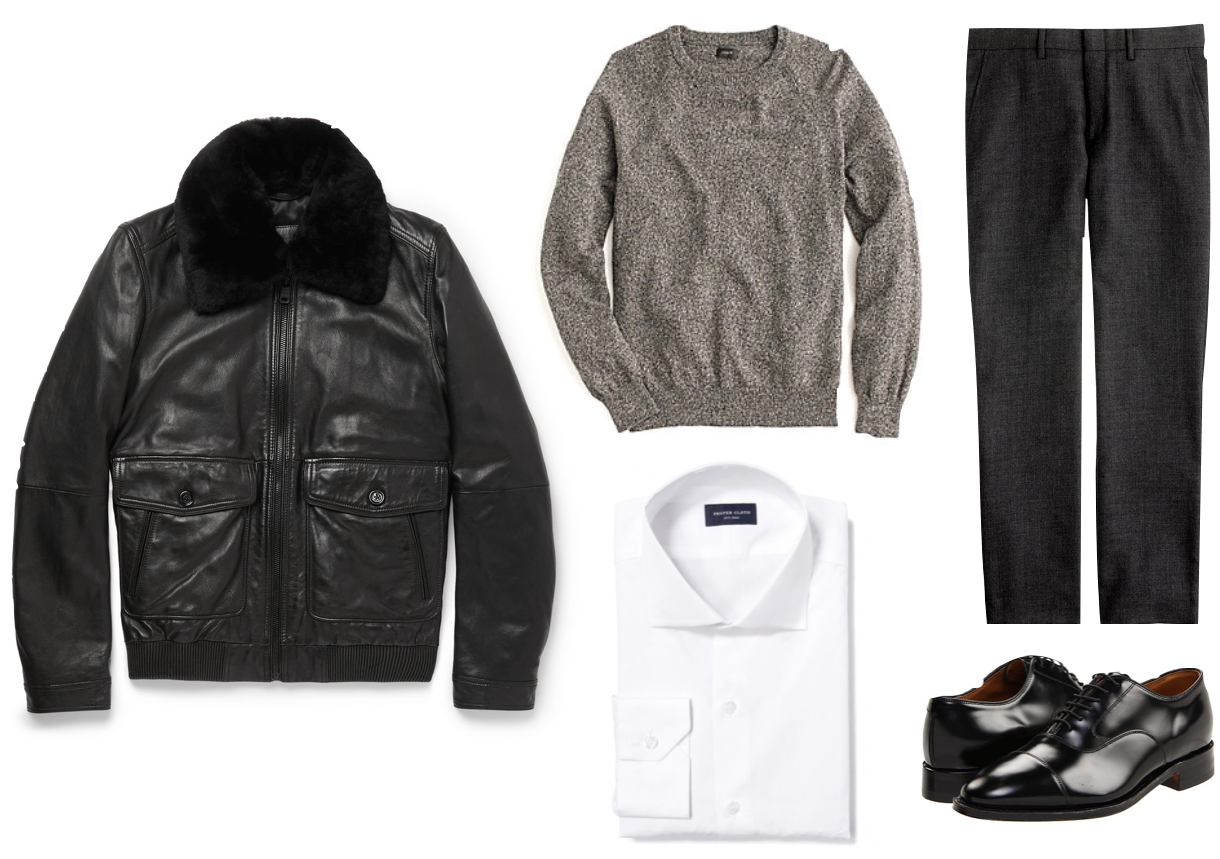
So, you’re headed to the office and don’t want to wear a suit jacket, but want to be taken seriously. When it comes to dressing up leather, the name of the game is luxury.
The black shearling trim on the Hugo Boss jacket gives it a more luxurious (translation: expensive) feel, countering the casual nature of leather jackets, making it the perfect blazer substitute.
Pairing it with a white button up, dark charcoal dress pants and oxfords keeps the look formal, while mixing different shades of gray will make you look serious without going full black.
Work (Casual)
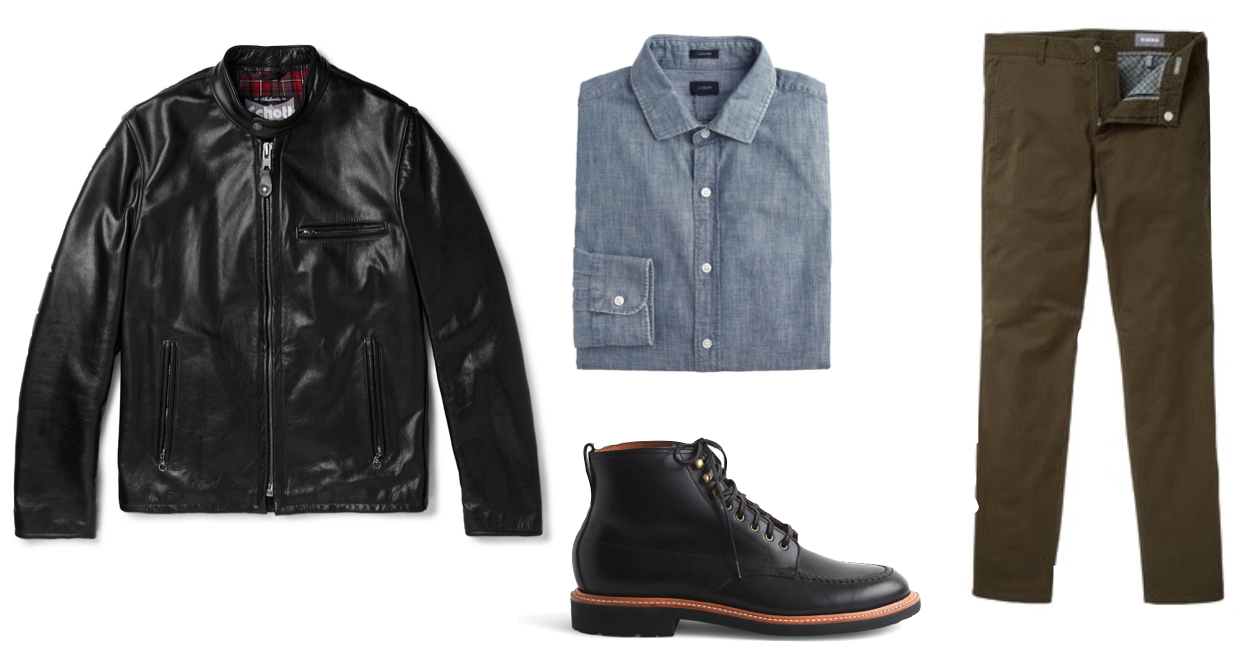
A workplace free of dress codes is no excuse to slouch. Denim and dark military greens are a classic, great looking combo that works on every guy.
Swap out the oxfords for a proper, more casual boot, like the Kenton Pacer Boot by J.Crew. The contrasting welt on these boots not only call out to the military feel of the outfit, but give the look an extra pop of color without going overboard.
Weekend Casual
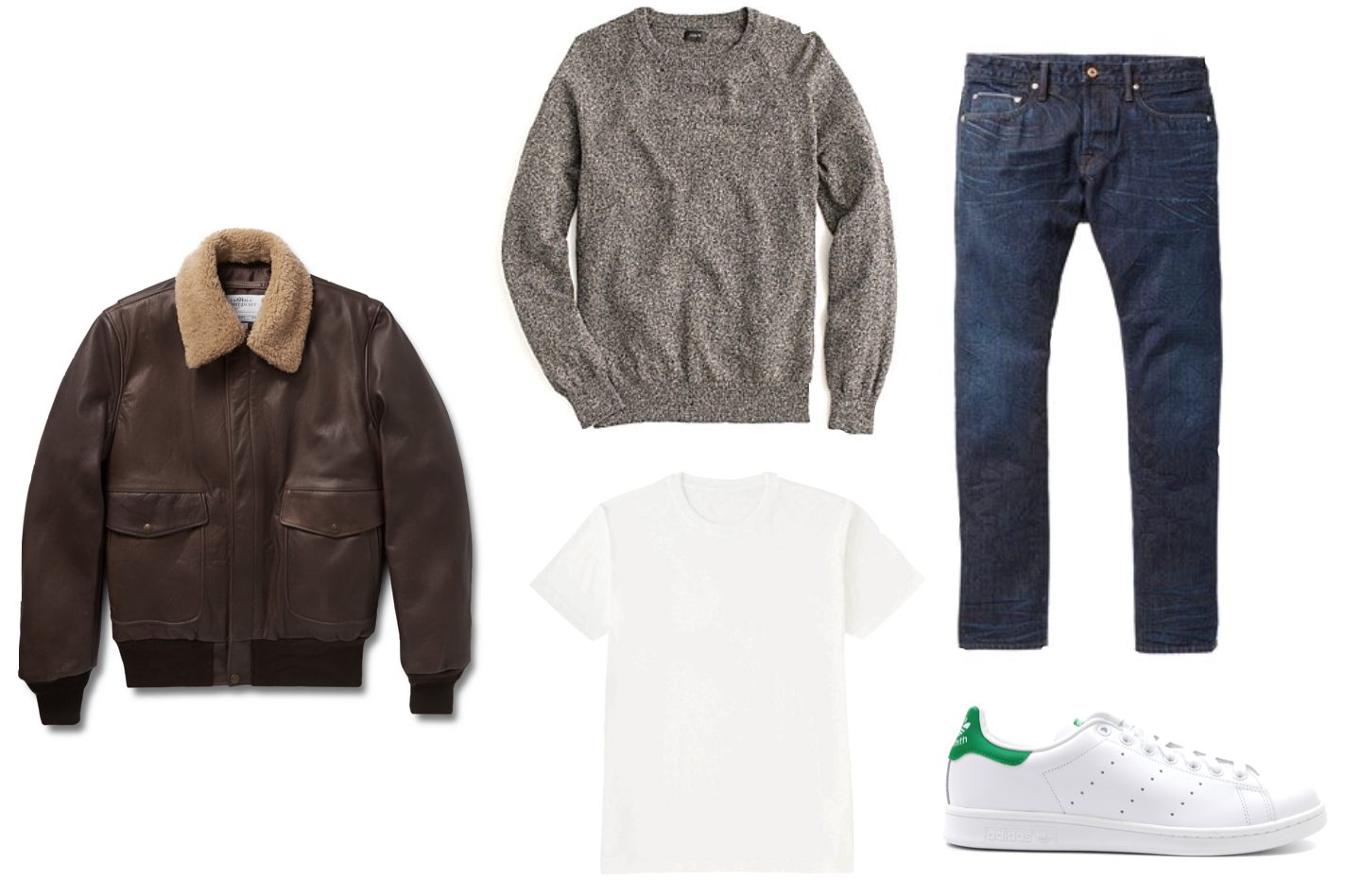
How can you top a leather jacket, white t-shirt and jeans combination when it comes to full on casual? Throw in a textured grey sweater when the weather gets a bit colder.
Sure, you could still rock the boots in this look, but dark denim like this is begging to be worn with a classic, minimal white sneaker.
What’s changed?
| 10/27/2023 | Updates to text, added sections, updated links |
| 03/03/2021 | Updated formatting, text, and links |
| 10/08/2015 | Original publish date |


